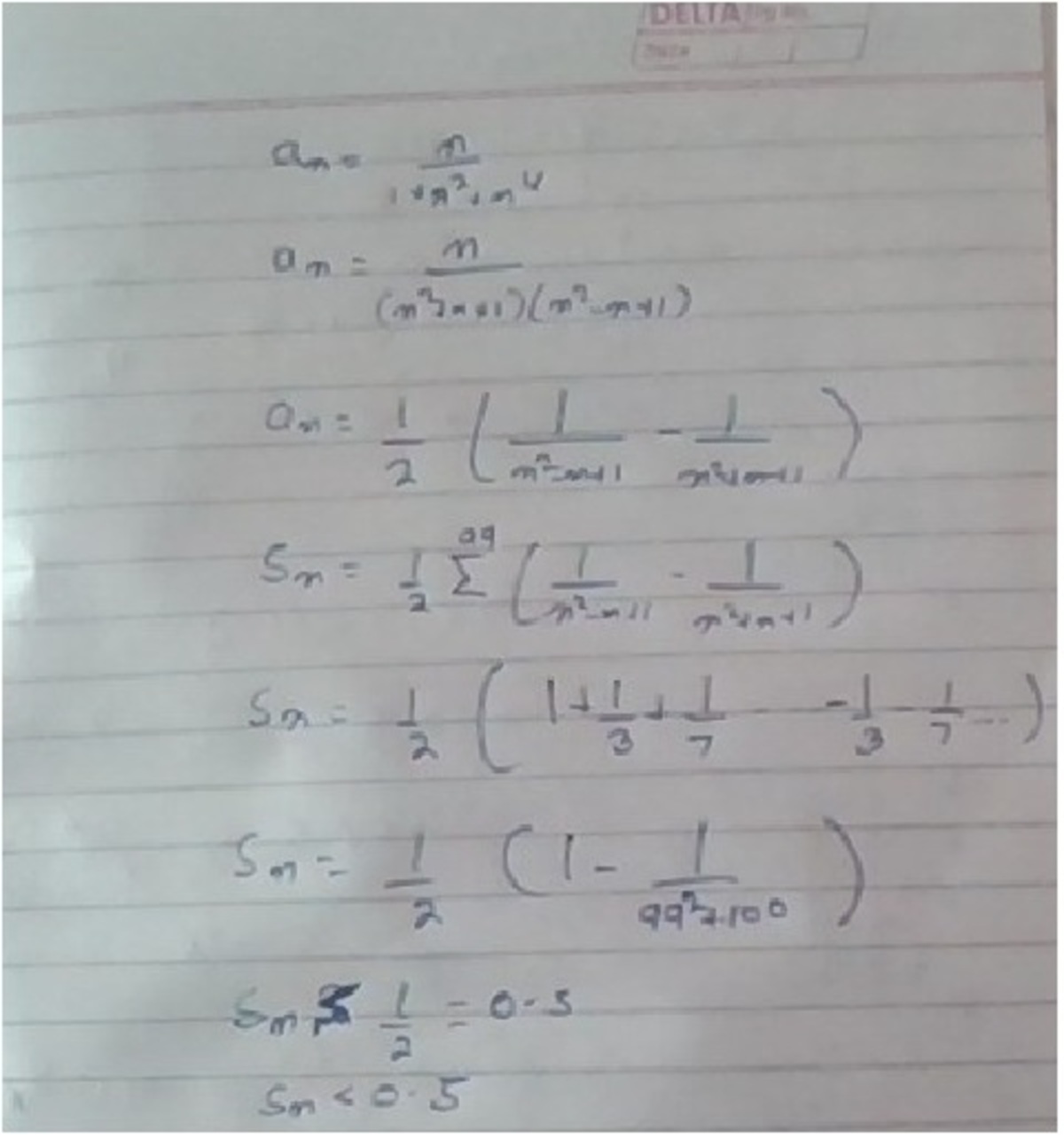A 2 2 . 5 Level Problem!
1 1 + 1 2 + 1 4 1 + 1 + 2 2 + 2 4 2 + 1 + 3 2 + 3 4 3 + ⋯ + 1 + 9 9 2 + 9 9 4 9 9
The sum above lies between...
This section requires Javascript.
You are seeing this because something didn't load right. We suggest you, (a) try
refreshing the page, (b) enabling javascript if it is disabled on your browser and,
finally, (c)
loading the
non-javascript version of this page
. We're sorry about the hassle.
2 solutions

nice solution i did the same way
The given sum can be written as:
S = n = 1 ∑ 9 9 n 4 + n 2 + 1 n = n = 1 ∑ 9 9 ( n 2 − n + 1 ) ( n 2 + n + 1 ) n = 2 1 n = 1 ∑ 9 9 ( n 2 − n + 1 1 − n 2 + n + 1 1 ) = 2 1 n = 1 ∑ 9 9 ( n 2 − n + 1 1 − ( n + 1 ) 2 − ( n + 1 ) + 1 1 ) = 2 1 ( 1 − 1 + 1 1 − 1 0 0 2 − 1 0 0 + 1 1 ) > 2 1 − 0 . 0 0 0 0 5
⟹ 0 . 4 9 < S < 0 . 5 0 .
@Razing Thunder , please don't use all capital letters in writing. It is equivalent to shouting in speak. It is therefore rude to do so. You need only to use one pair of \ ( \ ) or \ [ \ ] . Use only three dots ⋯ .
Log in to reply
sir @Chew-Seong Cheong can you check this question's report THIS QUESTION please
Log in to reply
Sorry, I don't get it too.
Log in to reply
@Chew-Seong Cheong – do you think the question is wrong
Log in to reply
@Razing Thunder – I am not sure
Log in to reply
@Chew-Seong Cheong – does trigonometry comes under algebra
Log in to reply
@Razing Thunder – Nope. Should be Geometry
ok i understood , thanks for correcting me @Chew-Seong Cheong
Sir, I don't understand the third step of breaking intro two fractions which are subtracted. Please help me.
Log in to reply
i also ..
n 2 − n + 1 1 − n 2 + n + 1 1 = ( n 2 − n + 1 ) ( n 2 + n + 1 ) n 2 + n + 1 − ( n 2 − n + 1 ) = ( n 2 − n + 1 ) ( n 2 + n + 1 ) 2 n
Log in to reply
Ok thanks! But how can someone know which fractions subtract like that? Is there some trick?
Log in to reply
@Vinayak Srivastava – LCM is taken in this step
@Vinayak Srivastava – Basically through experience, You have to try more problems and learn.
Log in to reply
@Chew-Seong Cheong – Thank you Sir! Also, how can one get the insight of breaking into two fractions? I mean, it doesn't seem so natural to me from seeing the problem. Maybe, I saw this kind of problem for first time, so this is the case. I would surely like to know!
Log in to reply
@Vinayak Srivastava – Yes, it will come natural to you when you see more of this kind of problems.
@Vinayak Srivastava – Try to search telescopic sums on youtube.